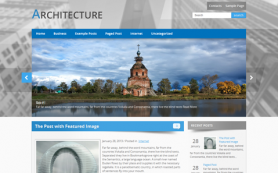Creating a website is a multi-step, intricate process that starts with planning and ends with launch. Every stage is necessary to build a successful website or web application that meets user needs and business goals. This article will examine the primary steps and techniques involved in web development.
Understanding the Web Development Lifecycle
The web development lifecycle is a blueprint for managing and creating web applications. Planning, design, development, testing, deployment, and maintenance are some of the steps that it goes through. The goals and actions of each phase make the project successful overall.
Planning and Analysis
The journey begins with planning and analysis. This foundational stage involves understanding the projects' goals, target audience, and required functionality. Developers, project managers, and stakeholders come together to define the websites' objectives, scope, and constraints. Tools such as project briefs, SWOT analysis, and personas ensure a clear and shared vision. This stage sets the roadmap for the entire project, outlining timelines, resources, and milestones.
Design
Once the planning is complete, the design phase starts. This stage focuses on creating the visual layout and user experience (UX) design. Designers use wireframes, mockups, and prototypes to visualise the structure and navigation of the site. User Interface (UI) design also comes into play, focusing on aesthetics, such as colour schemes, typography, and images, ensuring the site is functional and appealing. Tools like Adobe XD, Sketch, and Figma are popular choices for designing high-fidelity prototypes that closely resemble the final product.
Development
With the design in hand, the development phase begins. This stage is where the website or web application gets built. It has two main areas: front-end and back-end development.
Front-end development involves turning the design prototypes into a functioning website using HTML, CSS, and JavaScript. Front-end developers focus on the user interface and user experience, ensuring the site is responsive and works seamlessly across different devices and browsers.
Back-end development focuses on the server side, building the functionality and logic that powers the websites' operations. It includes creating databases, integrating with other services, and ensuring data is securely stored and retrieved. Languages and frameworks Python, Ruby on Rails, PHP, and Node.js are in back-end development.
SEO and Marketing
Although not always considered a part of the web development process, Search Engine Optimization (SEO) and digital marketing are critical for a websites' success. Optimising content, improving site speed, and ensuring mobile-friendliness are just a few strategies to improve a sites' 토렌트순위 on search engines. Additionally, social media marketing, email marketing, and online advertising play a key role in driving traffic and engaging users.
Testing
Testing is integral to the web development process so the website or application is functional, user-friendly, and secure before it goes live. This stage involves multiple types of tests:
- Functionality testing checks if all features work as intended.
- Usability testing assesses the user experience and interface.
- Performance testing ensures the site operates smoothly under various conditions.
- Security testing identifies vulnerabilities to protect against threats.
- All potential use cases and situations are covered by both automated and manual testing techniques, guaranteeing a reliable and effective solution.
Deployment
After testing and final approvals, the website is ready for deployment. It involves transferring files to a live server and setting up the domain. Web developers use FTP/SFTP clients or automated deployment tools integrated with version control systems like Git. The public can visit the website once it has been implemented. However, the process does not end here; continuous monitoring is necessary to ensure the site remains operational. And any issues that arise post-launch get addressed.
Maintenance
The web is dynamic, and continuous maintenance is essential to keep a website relevant and functional. It includes updating content, fixing bugs, and adding new features or enhancements based on user feedback and evolving business needs. Regular security updates are also crucial to protect against new vulnerabilities. Analytics tools, like Google Analytics, monitor user behaviour and website performance to provide insights for improvements and developments.
Updates
The web development process doesn't end with deployment. Ongoing maintenance ensures the website remains functional, secure, and up-to-date. It includes regular updates, bug fixes, and adding new features as needed. Analytical tools like Google Analytics monitor website performance and user engagement, guiding future improvements.
Conclusion
Web development is a complex and iterative process that requires a multidisciplinary approach to create functional, user-friendly, and aesthetically pleasing websites. The project's success depends on each stage, from initial planning and design to development, testing, and maintenance. By understanding and effectively performing these processes, developers, designers, and project managers can work together to build websites that meet and exceed user expectations and business objectives. The dynamic nature of the web also means that learning and adapting to new technologies and best practices is a continuous journey for web development professionals.
 Members Area
Members Area




